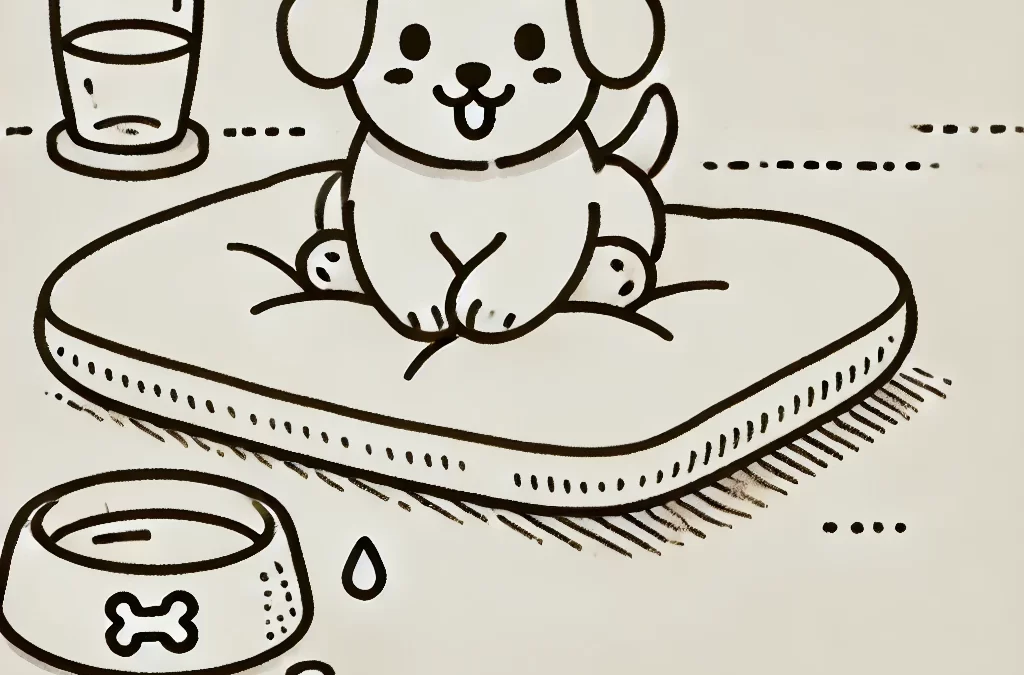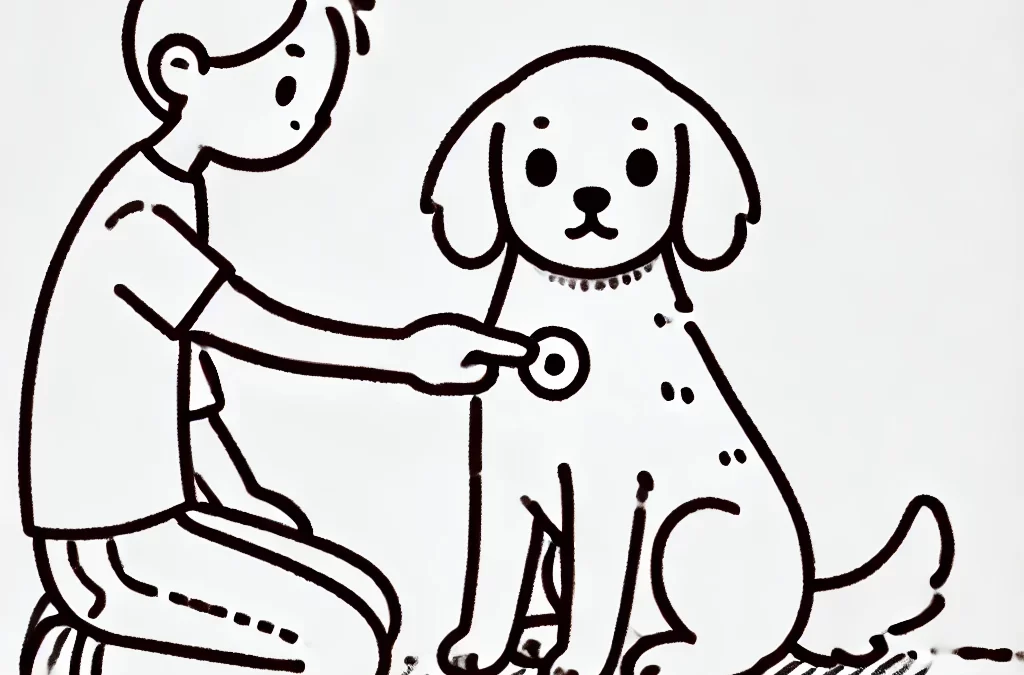
執筆者 TCMVET | 2025年2月10日 | 猫の癌と腫瘍
ペットの飼い主として、私たちは猫を回復力のある自立した生き物だと考えがちです。猫の健康は猫がコントロールしているように思えます。しかし、人間と同じように、猫もがんなどさまざまな健康状態にかかりやすいのです。よく次のような疑問が湧きます。 私の猫は癌になりやすいのでしょうか? その答えは、見落とされがちな複雑な遺伝学の世界にあります。猫の腫瘍の背後にある遺伝的要因を理解することで、ペットのケアを改善し、早期の警告サインを特定できるようになります。
猫の癌における遺伝学の役割
猫の腫瘍の発生には、人間と同様、遺伝が重要な役割を果たします。たとえば、特定の品種は、遺伝的に特定の種類の癌を発症しやすい傾向があります。癌は多因子性であり、つまり環境要因も重要な役割を果たしますが、遺伝は遺伝的リスクを理解するための基礎となります。
犬種特有の素因
猫の種類によっては、何世代にもわたって受け継がれてきた遺伝的要因により、特定の種類の癌にかかりやすいものがあります。例:
- シャム猫: シャム猫は、リンパ腫や白血病など、さまざまな癌を発症する傾向があります。この品種の遺伝子構成により、特定の免疫システムの機能不全が生じやすくなり、これらの癌にかかりやすくなっている可能性があります。
- ペルシャ猫ペルシャ猫は腎臓に影響を及ぼす癌である腎細胞癌を発症するリスクが高くなります。この品種に存在する遺伝子変異は腎臓の正常な機能に影響を及ぼし、腫瘍形成の可能性につながります。
- メインクーン猫メインクーンは体が大きく、性格も穏やかで知られていますが、体の大きさや構造に関連した遺伝子変異により、心筋症などの心臓腫瘍を発症するリスクも高くなります。
これらの品種特有の素因は、猫の癌における遺伝的要素の重要性を浮き彫りにしています。特定の癌リスクがあることが知られている品種を飼っている場合は、早期の兆候に注意し、定期的に獣医の診察を受けることが重要です。
遺伝子変異と癌
品種特有の傾向以外にも、猫は特定の遺伝子変異を受け継いで、がんにかかりやすくすることがあります。これらの変異は、腫瘍抑制遺伝子、細胞増殖、異常な細胞を検出して破壊する免疫システムの能力に影響を及ぼす可能性があります。
代表的な例は、 p53遺伝子は「ゲノムの守護者」として知られています。この遺伝子は細胞分裂を制御し、損傷した DNA を修復するために不可欠です。この遺伝子が変異すると、制御不能な細胞増殖を引き起こし、腫瘍の可能性が高まります。欠陥のある p53 遺伝子を持つ猫は、リンパ腫や軟部肉腫などの癌を発症する可能性が高くなります。
さらに、 がん遺伝子細胞の成長を促進する遺伝子も、猫の癌に関与している可能性があります。これらの遺伝子が遺伝子変異により過剰に活性化すると、異常な細胞増殖を引き起こし、腫瘍の発達に寄与する可能性があります。
猫の遺伝子検査は可能ですか?
人間の場合、遺伝子検査はがんリスクを特定するための標準的な方法となっていますが、猫の場合はどうでしょうか? 猫のがんの遺伝子検査はまだ比較的新しいものですが、急速に進歩しています。一部の獣医クリニックでは、特定のがんの素因を特定するための遺伝子検査を提供しています。これらの検査では、猫の DNA を分析して、がんリスクに関連する特定の変異を調べることができます。
遺伝子検査は、特にがんになりやすい品種について、貴重な洞察を提供します。たとえば、猫がシャム猫やペルシャ猫である場合、遺伝子検査は、がんを発症する可能性を高める突然変異があるかどうかを判断するのに役立ちます。
しかし、遺伝子検査で猫に癌の素因があることがわかったとしても、必ずしも癌を発症するわけではないことを覚えておくことが重要です。食事、環境、ライフスタイルなど、他の多くの要因が腫瘍の発症に影響します。
早期発見:がんリスク管理の鍵
猫の癌に対する遺伝的素因を理解することは重要ですが、早期発見は腫瘍のリスクを管理する最も効果的な方法の 1 つです。定期的な獣医による検査、毎年の検査、猫の行動や身体の変化に注意を払うことは、最も治療しやすい初期段階で腫瘍を発見するのに役立ちます。
猫に腫瘍があるかもしれない兆候には次のようなものがあります:
- しこりや腫れ 消えたり大きさが変わったりしないもの。
- 食欲減少 または突然の体重減少。
- 原因不明の無気力 または活動レベルの変化。
- 呼吸困難 または咳をする。
- 毛皮の状態の変化.
これらの兆候に気付いた場合は、すぐに獣医に相談して、さらに詳しい評価と診断検査を受けてください。早期介入により、猫の予後が劇的に改善される可能性があります。
ライフスタイル要因は役立つでしょうか?
遺伝は猫の癌に対する感受性に影響を与える可能性がありますが、生活習慣の要因は病気を発症するかどうかを決定する上で重要な役割を果たします。適切な栄養、定期的な運動、ストレス管理はすべて、猫の健康を保護する効果があります。たとえば、猫を屋内で飼うことで、発癌物質やその他の環境リスクにさらされる可能性を減らすことができます。
猫に不必要な化学物質や保存料を含まないバランスの取れた食事を与えると、強い免疫システムを維持するのにも役立ち、異常な細胞が癌化する前に猫の体がそれらを撃退しやすくなります。ビタミン E やベータカロチンなどの抗酸化物質を補給すると、免疫システムをさらにサポートできます。
結論: 遺伝学はパズルの一部に過ぎない
猫の癌に対する遺伝的素因を理解することは重要ですが、それが猫の健康の唯一の決定要因ではありません。定期的な獣医の診察、早期発見、ライフスタイルの要因はすべて、猫の全体的な健康に貢献します。遺伝学の知識と積極的な健康管理を組み合わせることで、癌のリスクをより適切に管理し、猫の生活の質を向上させることができます。
覚えておいてください。たとえあなたの猫が遺伝的に癌になりやすい体質を持っていたとしても、必ず癌を発症するわけではありません。注意深く観察し、適切なケアを行えば、遺伝的リスク要因を持つ猫の多くは長く健康に生きることができます。重要なのは、情報を得て、早めに行動を起こすことです。

執筆者 TCMVET | 2025年2月9日 | 犬の癌と腫瘍
猫に腫瘍があると診断された場合、飼い主にとっても愛猫にとっても大変な経験となるでしょう。従来の治療法は手術、化学療法、投薬が中心となることが多いのですが、ホリスティックな健康に焦点を当てた新しいアプローチも登場しています。 適度な運動意外に聞こえるかもしれませんが、研究によると、運動は猫の免疫力を高め、生活の質を向上させ、回復を助ける上で貴重な味方となる可能性があります。この記事では、腫瘍の治療中に適度な運動が猫の免疫力と全体的な健康にどのように役立つかを探ります。
運動と免疫力の関係:知っておくべきこと
詳細に入る前に、まず運動と免疫システムの科学的な背景を理解しましょう。人間と動物の両方において、定期的な運動は白血球(感染症と戦う)の産生を刺激し、血行を促進し、体内の毒素の除去を促進することで免疫機能を改善することがわかっています。つまり、がん治療中でも、穏やかな運動は猫の自然な防御機構をサポートし、感染症と戦い、病気から回復しやすくなります。
節度が重要な理由
適度な運動は、激しい身体活動とは異なり、身体に負担をかけずに可動性を高めることに重点を置いた、負担の少ないアプローチです。腫瘍のある猫にとって、過度の運動は有害で、疲労や症状の悪化につながる可能性があります。したがって、バランスを取ることが重要です。目標は、楽しく刺激的で、猫の身体に負担をかけない活動を取り入れることです。
では、猫が適切な量の運動をしているか確認するにはどうすればよいでしょうか?
1. 短いプレイセッション:精神的な関与に焦点を当てる
腫瘍のある猫は、診断前と同じエネルギーレベルではない可能性があるため、猫を圧倒しないようにすることが重要です。長時間遊ぶ代わりに、 短く頻繁なプレイセッションお気に入りのおもちゃで 10 ~ 15 分間遊ぶだけで、猫の体と心の両方を刺激することができます。羽根の棒、レーザー ポインター、シンプルなボールなど、猫の精神を刺激し続けることは、身体的な活動と同じくらい重要です。
こうした遊びは、筋肉の緊張と柔軟性を維持しながら血行を促進し、免疫力の向上につながります。重要なのは継続性です。こうした遊びを猫の毎日の習慣にし、猫の快適さに合わせて長さを調整してください。
2. 安全で簡単な動きで探索を促す
あなたの猫が活発で好奇心旺盛な場合は、 ストレスの少ない環境を探る 家の中で猫を飼うのは楽しいものです。猫は歩き回るのが大好きで、小さな動きでも制御された動きが役に立つことがあります。たとえば、部屋から部屋へ移動したり、家の中の新しい場所を探索したりできるようにします。猫の環境を安全に保ち、怪我の原因となる障害物をなくし、休憩が必要なときに近くに居心地の良い休憩場所があることを確認します。
一日を通して運動する機会を設けることで、リンパの流れを促進し、解毒を助けます。また、このような穏やかな運動は、全体的な健康に不可欠な筋肉量と関節の健康を維持するのにも役立ちます。
3. 軽い散歩や屋外での時間を組み込む
屋外で過ごすのが好きな猫(または安全な屋外囲いがある場合)の場合、 穏やかな散歩 運動を促す素晴らしい方法になります。猫をリードにつないで散歩させると(猫が慣れている場合)、猫は探索したり足を伸ばしたりすることができ、血行が良くなり、景色が変わります。
ただし、運動は短時間にとどめ、暑さや湿気の多い天候は避けてください。猫の体に余分なストレスがかかる可能性があります。屋外での運動を、疲れるものではなく、楽しくストレスのないものにすることが目標です。
4. マッサージとストレッチ:間接的な運動
猫に腫瘍ができると、体の特定の部分に緊張感や不快感を感じることがあります。 優しいマッサージ 猫に身体的な負担をかけずに血行を促進する優れた方法です。優しく撫でたり、軽くストレッチしたりすることで血流を促進し、凝りを予防できます。
猫の中には、背中や脚を優しく伸ばされるのが好きな猫もいます。こうした動きは、筋肉の萎縮を防ぎ、リラックスするのに役立ちます。いつものように、猫の反応を観察してください。不快そうにしたり、抵抗したりする場合は、やめて、もっと優しいストレッチを試してください。
5. 顧客のニーズに合わせてアプローチを調整する
猫はそれぞれ異なり、腫瘍の種類や進行度、年齢、全体的な健康状態によって運動に対する反応は異なります。 猫の状態に応じてアプローチを調整します猫によってはもっと休息が必要な猫もいれば、もう少し活動したほうが元気になる猫もいます。獣医師に相談して、猫の特定の状況に適した運動量を判断してください。
休息と活動の適切なバランスは、治療中に猫がより快適に感じ、エネルギー レベルを高め、免疫システムをサポートするのに役立ちます。猫のエネルギー レベルと行動を常に監視し、猫が過度に疲れていないことを確認してください。
食事とサプリメントの役割
運動は免疫力を高める上で重要な役割を果たしますが、適切な食事とサプリメントと組み合わせることが重要です。特にがん治療中は、猫に高品質で栄養バランスの取れた食事を与えることが重要です。さらに、 免疫力を高めるサプリメント オメガ3脂肪酸、抗酸化物質、防御システムを強化する特定のハーブ療法などです。
ハーブサプリメントなど チュアンシオン(四川ラビジン), 霊芝そして ターメリック がん患者をサポートする効果がある可能性があります。猫の食事に新しいサプリメントを追加する前に、必ず獣医に相談してください。
結論: 癒しへの穏やかな道
がんのような診断を受けた猫は、常に休まなければならないと考えるのは簡単ですが、適切な量の 適度な運動 猫の健康維持と免疫力の向上に重要な役割を果たします。短時間の遊び、ゆっくりした散歩、安全な探索、そしてときどきのマッサージなどを通じて、猫の体の自然治癒力をサポートしながら活動的な状態を保つことができます。
覚えておいてください、目標は 節度—運動は決して強制されるべきではなく、猫の快適レベルに合った方法で奨励されるべきです。常に猫の合図に耳を傾け、獣医師と緊密に連携して、選択した運動が安全で有益であることを確認してください。忍耐、愛情、そして適度な穏やかな運動で、猫ががんの闘病を力強く、活力を持って乗り越えられるようサポートできます。

執筆者 TCMVET | 2025年2月9日 | 猫の癌と腫瘍
猫も人間と同様、年を取るにつれて腫瘍ができることがあります。腫瘍は良性の場合も悪性の場合もありますが、飼い主として私たちは常に愛猫に最善のケアを提供したいと願っています。手術、化学療法、放射線療法などの従来の治療法が一般的ですが、多くの猫の飼い主は猫の健康をサポートし、従来の治療法を補う自然な代替手段を求めています。最も一般的で効果的な選択肢の 1 つは、天然サプリメントの使用です。
この記事では、猫の腫瘍に対する最良の自然療法と、猫の健康をサポートするために適切なサプリメントを選択する方法について説明します。 TCMVET 白頭霄腫瘍の成長を抑制するために設計された製品です。
腫瘍治療における天然サプリメントの役割を理解する
天然サプリメントは、がんと闘う猫の体をサポートする上で重要な役割を果たします。サプリメントの中には免疫力を高めることに焦点を当てたものもあれば、症状の管理や腫瘍の成長抑制に役立つものもあります。ただし、サプリメントは従来の獣医治療の代わりとしてではなく、補完療法として使用すべきであることを覚えておくことが重要です。
猫の腫瘍に効く主なサプリメント
- ターメリック(クルクミン)
ウコンの有効成分であるクルクミンは、抗炎症作用と抗がん作用があるとして研究されてきました。腫瘍の成長を防ぎ、がん細胞の拡散を遅らせる効果があることが知られています。ウコンはサプリメントの形で販売されており、吸収を高めるために黒コショウと組み合わせられることがよくあります。
- CBDオイル
CBD (カンナビジオール) は、がんを患うペットの痛みや炎症を軽減する効果があることから、人気が高まっているもう 1 つの天然サプリメントです。また、健康上の問題を抱える猫によく見られる不安やストレスの軽減にも役立つ可能性があります。CBD オイルは、腫瘍を縮小させ、全体的な生活の質を向上させる可能性があることが示されています。
- オメガ3脂肪酸
魚油に含まれるオメガ 3 は、抗炎症作用と免疫力を高める作用があることでよく知られています。腫瘍の成長を抑え、健康な毛皮、皮膚、全体的な活力を維持するのに役立ちます。
- キノコサプリメント
霊芝、椎茸、舞茸などの薬用キノコは、免疫力を高め、抗がん作用があることから、伝統医学で使用されてきました。これらのキノコには、がん細胞と戦う免疫系を刺激するベータグルカンが含まれています。
- TCMVET 白頭霄
TCMVET 白頭霄 は、腫瘍の成長を抑制し、軽減する効果があると認められている漢方薬サプリメントです。がんを患うペットをサポートするために特別に配合されたこのサプリメントは、血液の循環を促進し、腫瘍の成長につながる血液の停滞を軽減します。腫瘍のある猫にとって、特に獣医による治療と併用して補助治療として使用すると、優れた選択肢となります。
猫に適したサプリメントの選び方
猫用のサプリメントを選ぶ際には、考慮すべき要素がいくつかあります。
- 獣医師に相談する: 猫の食事療法に新しいサプリメントを導入する前に、必ず獣医に相談してください。サプリメントの中には、医薬品や他の治療法と相互作用するものもありますので、互換性を確認することが重要です。
- 品質と調達: 選ぶサプリメントは信頼できる供給元からのものであることを確認してください。健康上の懸念に対処するためのサプリメントの場合、特に品質が重要です。ペット専用に設計され、品質と安全性の実績がある会社が製造する製品を選択してください。
- 猫用処方: 猫は人間とは異なる栄養ニーズを持っているため、サプリメントは必ず猫用に調合されていることを確認してください。サプリメントの中には、特に猫に優しいように設計されており、カプセル、粉末、液体のいずれの形であれ、猫が摂取しやすいものもあります。
- 特定の腫瘍の種類: 腫瘍の種類によって、必要なサポートも異なります。たとえば、固形腫瘍の管理に効果的なサプリメントもあれば、内臓がんや血液がんに適したサプリメントもあります。猫の特定の状態に合ったサプリメントを選ぶようにしてください。
結論
自然療法は猫の癌治療計画の貴重な一部となり得ます。ウコン、CBDオイル、オメガ3脂肪酸、薬用キノコなどのサプリメントは猫の免疫システムをサポートし、炎症を軽減し、腫瘍の成長を阻害する可能性があります。特に、 TCMVET 白頭霄 全体的な健康を促進し、腫瘍の進行を抑えるように設計された、漢方薬成分の独自のブレンドを提供します。
ペットの健康に最善の結果をもたらすために、猫の食事療法に新しいサプリメントを追加する前に必ず獣医に相談してください。総合的なケアアプローチを組み合わせれば、あなたの猫の仲間が長く健康に暮らす可能性が高まります。

執筆者 TCMVET | 2025年2月7日 | 犬の癌と腫瘍
化学療法は癌にかかった犬にとって命を救う治療法となり得るが、しばしば副作用が伴い、生活の質に影響を与える。犬の化学療法は一般的に人間ほど強力ではないが、それでも多くの犬が 消化器系の問題、疲労、食欲不振、免疫力の低下方法を理解する 不快感を最小限に抑える 適切な 栄養および支持療法 治療中の犬の健康に大きな違いをもたらす可能性があります。
犬の化学療法の一般的な副作用
🐶 胃腸の問題 – 胃の内壁の細胞が急速に分裂するため、化学療法によって嘔吐、下痢、吐き気、食欲不振がよく起こります。
🐶 疲労と衰弱 – 犬が普段より疲れていて、より長い休憩時間を好む可能性があります。
🐶 免疫力の低下 – 化学療法により白血球数が減少し、犬が感染症にかかりやすくなります。
🐶 脱毛症(特定の犬種) – ほとんどの犬は毛があまり抜けませんが、継続的に毛が成長する犬種(例:プードル)では毛が著しく薄くなることがあります。
🐶 口内炎とよだれ – 犬によっては口内炎ができ、食事中に不快感を感じることがあります。
化学療法の副作用を軽減するには?
1. 吐き気と嘔吐の管理
- 一度に大量に与えるのではなく、少量ずつ頻繁に食事を与えてください。
- 味気ない消化しやすい食べ物を提供する ゆでた鶏肉、白米、カボチャ.
- ショウガ (生またはサプリメントの形で)は吐き気を軽減するのに役立ちます。
- 嘔吐が続く場合は、獣医に吐き気止めの薬について相談してください。 セレニア(マロピタント).
2. 食欲を促し、体重減少を防ぐ
- 犬の食べ物を少し温めると香りが増し、食欲が増します。
- 高カロリーで栄養価の高い食品を試してみてください。 調理した卵、赤身の肉、カッテージチーズ.
- 追加することを検討してください 骨スープまたはヤギミルク 水分補給と栄養補給のために食事に加えてください。
- 犬が食事を拒否する場合は、食欲増進剤など ミルタザピン 役に立つかもしれません。
3. 下痢と脱水症状の予防
- 使用 プロバイオティクス(例:FortiFlora) 腸の健康をサポートします。
- 豊富な食物を与える 水溶性食物繊維 缶詰のカボチャや蒸しサツマイモなど。
- 常に新鮮な水が手に入るようにし、 電解質溶液 下痢が続く場合。
- 下痢が 24 時間以上続く場合や血が混じっている場合は、獣医に相談してください。
4. 免疫力を高める
- 含む 抗酸化物質が豊富な食品 ブルーベリー、ターメリック、オメガ3脂肪酸など。
- 薬用キノコ(例: ターキーテール、霊芝)は免疫機能の調節に役立つ可能性があります。
- 免疫力の低下により感染リスクが高まるため、化学療法中は生食を避けてください。
5. 疲労と衰弱の管理
- 犬に 追加の休憩 ただし、血行を良くするために短い散歩などの軽い運動を推奨します。
- 提供する 快適で暖かい休憩スペース 柔らかい寝具付き。
- 緊張を和らげ、リラックス効果を高めるために、穏やかなマッサージ療法や指圧を検討してください。
6. 口内炎とよだれのケア
- オファー 柔らかいまたは湿った食べ物 刺激を軽減します。
- ペットに安全なものを使用する 口腔洗浄液(例:クロルヘキシジン溶液) 感染を防ぐためです。
- ココナッツオイルは鎮静作用と抗菌作用があるため、歯茎に塗ることができます。
役立つかもしれないサプリメント
🌿 ミルクシスル – 化学療法薬からの肝臓解毒をサポートします。
🌿 CBDオイル – 痛み、吐き気、炎症の緩和に役立つ可能性があります。
🌿 L-グルタミン – 腸内壁の健康をサポートし、下痢のリスクを軽減します。
🌿 オメガ3脂肪酸(魚油) – 抗炎症効果があり、免疫の健康をサポートします。
獣医に連絡するタイミングは?
🚨 24時間以上続く嘔吐または下痢
🚨 重度の無気力または虚脱
🚨 感染の兆候(発熱、リンパ節の腫れ、過度の呼吸)
🚨 2日以上食欲不振が続く
🚨 止血できない出血やあざ
最終的な考え
犬の化学療法の副作用を管理するには、 バランスのとれたアプローチ 組み合わせる 栄養サポート、在宅ケア、獣医指導犬の反応を注意深く観察し、必要な調整を行うことで、治療をうまく進めることができます。 より快適で回復力のある.

執筆者 TCMVET | 2025年2月7日 | 犬の癌と腫瘍
愛犬の体にしこりが見つかると、不安になります。それは単なる無害な脂肪腫でしょうか、それとももっと深刻なものでしょうか。多くの飼い主は、しこりを自宅で観察するか、急いで獣医のところに行くか迷います。 重要なのは、しこりを適切に評価する方法を知り、医師の診察を必要とする警告サインを認識することです。
この記事では、 実践的なガイド ペットの飼い主が愛犬の腫れや腫れを評価することで、獣医の診察を受ける時期について十分な情報に基づいた判断を下せるようになります。
犬のしこりをチェックするためのステップバイステップガイド
🖐 1. 「5つのルール」アプローチを使用する
犬のしこりを検査するときは、次の 5 つの要素を評価します。
1️⃣ サイズ – しこりはエンドウ豆よりも小さいですか、それとも時間が経つにつれて大きくなっていますか?
2️⃣ 形 – 丸くて滑らかですか、それとも不規則で凸凹していますか?
3️⃣ テクスチャ – 柔らかくて動くものでしょうか、それとも硬くて下の組織に付着しているものでしょうか?
4️⃣ 色と表面 – しこりの上の皮膚は正常ですか、赤くなっていますか、それとも潰瘍ができていますか?
5️⃣ 成長率 – 数週間または数か月以内にサイズは変化しましたか?
🐾 2. 「2本指テスト」
指の間でしこりをそっと動かします。 自由に移動できる 皮膚の下に腫瘍がある場合は、良性腫瘍(脂肪腫など)である可能性が高いです。 しっかりと固定 より深い組織に及べば、さらに懸念される可能性があります。
🔍 3. その他の症状を観察する
チェック 犬の行動の変化 そして全体的な健康状態。食事はきちんととれていますか?体重は減っていますか?しこりを過度に掻いたり舐めたりしていませんか?これらの手がかりは、しこりが不快感や全身への影響を引き起こしているかどうかを判断するのに役立ちます。
しこりの一般的な種類と心配すべきタイミング
🔹 脂肪腫(脂肪性腫瘍)
✅ 柔らかく、丸く、動きやすい
✅ 高齢犬や太りすぎの犬によく見られる
✅ 通常は無害ですが、突然の成長には注意が必要です
🔹 皮脂嚢胞
✅ 濃い、白っぽい、または黄色っぽい物質が詰まっている
✅ 破裂したり感染したりする可能性がある
✅ 深刻ではないことが多いですが、問題がある場合は排液や除去が必要になる場合があります
🔹 肥満細胞腫(MCT)
🚨 赤くなったり、腫れたり、潰瘍ができたりすることが多い
🚨 ヒスタミン放出によりサイズが急激に変化する可能性がある
🚨 攻撃的になる可能性があるため、すぐに獣医の診察を受ける必要があります
🔹 組織球腫
✅ 若い犬によく見られ、通常は頭部または脚に現れます
✅ 赤く盛り上がったボタンのようなしこりとして現れる
✅ 自然に消えることが多いですが、それでも確認する必要があります
🔹 軟部肉腫
🚨 しっかりしていて、根が深く、成長が遅い
🚨 明確に定義されていないと感じることが多い
🚨 侵襲性があり、外科的除去が必要になる場合があります
いつ獣医に診てもらうべきですか?
📌 以下の場合には直ちに獣医の診察が必要です:
- しこり 急速に成長する または形を変える
- それは しっかりと固定 基礎構造に
- がある 出血、潰瘍、または感染症
- しこりが痛みや不快感を引き起こす
- あなたの犬は その他の症状 体重減少、無気力、食欲の変化など
📌 自宅で監視する場合:
- そのしこりは 小さく、柔らかく、成長が遅い
- あなたの犬は演技している 不快感のない正常
- 急激な変化はない サイズ、質感、色 観察される
獣医が腫瘍を診断する方法
獣医の診察が必要な場合は、次のものが使用されることがあります。
🩸 穿刺吸引法(FNA) – 顕微鏡検査用の細胞抽出
🔬 生検 – より詳細な分析のために組織サンプルを採取する
🖥 超音波またはX線 – 内部腫瘍や転移の有無を確認する
最終的な考え
すべてのしこりがパニックを引き起こすわけではありませんが、 早期発見が重要最善のアプローチは 犬の体を定期的にチェックする変化に注意し、疑問がある場合は獣医に相談してください。積極的に行動することで、愛犬の長期的な健康を確保する上で大きな違いが生まれます。





